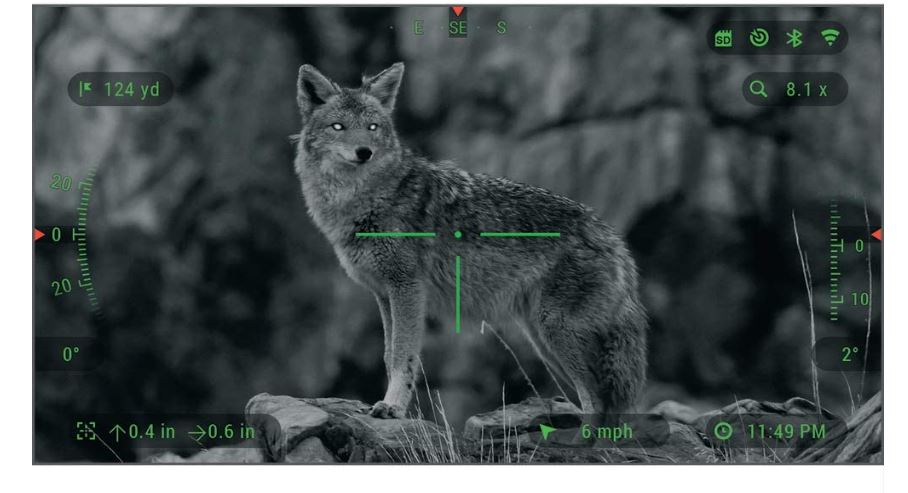Can you use a night vision scope during the day?
Many people ask this question before they buy night vision scope goggles or binoculars. Well, the answer to this question is both Yes and No. This article will clarify these answers and also help you to understand what is night vision and how a night vision scope works.
What is night vision?
Night vision is a technology that allows you to see objects in dim light or extremely dark conditions. Night vision has been employed on scopes, binoculars, monoculars, and cameras. It’s useful in numerous activities like; hunting, backpacking, security surveillance, and watching animals after dark.
Different night vision device however uses different technology to illuminate your view. And improve your vision of an object in the dark.
Types of night vision scopes.
Night vision scopes come in various forms. All meant to give you a clear image in dark situations. There exist three items under the terminology ‘night vision’. The three are;
Image intensifier
Night vision with an image intensifier tube, also known as analog night vision, boosts the ambient lighting around an object to make it visible to the human eye. It begins the process by collecting ambient light through the objective lens. The light enters the lens as photons and then passes through a photocathode.
A photocathode is a thin layer comprised of antimony and cesium elements, designed purposefully to convert the protons to photoelectrons. The photoelectrons then pass through a vacuum to a microchannel plate (MCP).
Once the electrons coming from the photocathode strike the MCP, more secondary electrons are generated. To further amplify the image.
The final image is formed when thousands of photoelectrons are deposited at the back of the phosphor. The phosphor is also the output screen of the image. And it converts the photoelectrons back to photons. The visible form of light to the human eye. We also have different generations of intensifier tubes.
Related: Generations of Night Vision Explained (Gen 0-4)
Thermal Imaging/Infrared
Thermal imaging uses heat rather than light to identify objects in dark situations. All objects emit a heat signature known as infrared energy. This device captures the infrared energy and converts it into a thermal image. Which is displayed to the user.
Related: Difference between thermal and infrared scopes
Digital night vision
These use a slightly different amplification system than the one used in the Image intensifier. Rather than amplifying ambient lighting through the use of a photocathode and an MCP. The digital night vision collects the ambient lighting and converts it into an electrical image through, a Charge Coupled Device (CCP).
This electrical image is then displayed on an LCD screen. The output screen of the image.
Advantages of digital night vision
- Cheaper in cost than the image intensifier
- Easy to record and capture images onto a storage device
- Less delicate compared to the image intensifiers.
Do night vision scopes work during the day?
Depends on the type of type of night vision.
The image intensifier
This type of night vision mostly cannot be used during the day. Doing so will result in complete damage to the tube and your eyes if you look through it.
This occurs because the intensifier tube draws as much ambient light as it can from an object and then amplifies it to make the object adequately visible. Amplifying the already bright light that is present during the day is what results in damage to the night vision, and the eyes.
Some of these night vision devices, however, come with protective features such as autogating and automatic brightness control, allowing them to function during the daytime.
It’s very important to find out the capabilities, and safeguards of your night vision before exposing it to the daylight
Thermal imaging
Thermal imaging night vision isn’t affected by light because it relies on heat to detect an object. This means that it can be used during the day. On a sunny daylight, however, many objects will be emitting heat. And the images will not be as defined compared to when the scope is used at night.
The ATN ThOR 4 2-8x25mm thermal HD is the best example of a good thermal rifle scope.
Digital night vision
This type of night vision scope can also work during the day. This is because they lack an intensifier tube but rather rely on a CCP. To convert the light into an image. Some digital night vision scopes also automatically adjust to the amount of light coming from an object. And will display a normal image when there is sufficient light.
A good example of an affordable digital rifle scope is the Night Owl Optics NightShot 3x NV Rifle Scope.
CONCLUSION
The suitability of a night vision scope for use during the day depends on the type of technology used to generate the night vision. To be on the safe side, however, a night vision device should only be used at night as the name suggests.
It’s also good to note that a night vision device, capable of being used in both day and night. Do not offer the same effectiveness as a device only suited for use in the dark. It’s also best to use night vision scopes primarily during low-light or nighttime conditions, reserving them for their intended purpose
Related
